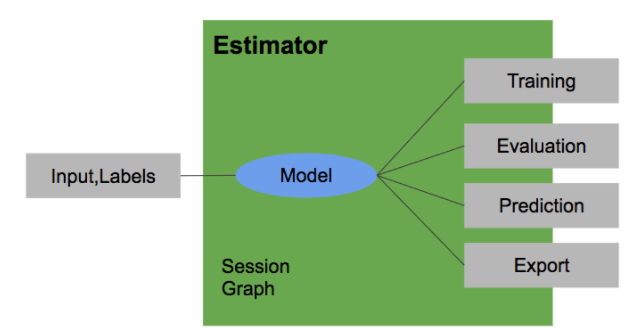Tensorflow Tips
1. Eager Execution Mode [한글]
import tensorflow as tf
tf.executing_eagerly() # TF 2.x
#tf.enable_eager_execution() #TF 1.x
tf.compat.v1.disable_eager_execution()
model = multi_gpu_model(model, 2, cpu_relocation=True)
tf.test.is_gpu_available()
is_training_pl = tf.placeholder(shape=(),dtype=tf.bool, name="b")
is_training_pl = tf.Variable(tf.zeros(shape=(),dtype=tf.bool), name="b")
tf.compat.v1.Variable(name, shape, dtype=dtype)
tf.train.exponential_decay -> tf.compat.v1.train.exponential_decay
tf.get_variable -> tf.Variable
initializer=tf.contrib.layers.xavier_initializer()) -> initializer = tf.initializers.GlorotUniform()
tf.get_variable -> tf.Variable -> tf.compat.v1.Variable(name, shape, initializer=initializer, dtype=dtype)
tf.contrib.layers.batch_norm() --> tf.compat.v1.layers.BatchNormalization
#https://www.tensorflow.org/api_docs/python/tf/layers/BatchNormalization?hl=ko
https://www.tensorflow.org/beta/guide/migration_guide?hl=ko#%EB%B3%80%ED%99%98_%EC%A0%84
- Eager 모드 실행을 위해 경할 코드 8가지 : Placeholders, Variables,
2. ft.py_func
Python 코드를 텐서플로우에서 실행 하는 방법 [참고]
3. Eager - Graph
# Eager
def measurement(gpu=False):
if gpu:
device = "/gpu:0"
else:
device = "/cpu:0"
with tf.device(device):
with tf.GradientTape() as tape:
y_pre = model(x)
loss_value = loss(y, y_pre)
grads = tape.gradient(loss_value, model.variables)
optimizer.apply_gradients(zip(grads, model.variables))
# Graph
@tf.contrib.eager.defun
def graph_measurement(gpu=False):
if gpu:
device = "/gpu:0"
else:
device = "/cpu:0"
with tf.device(device):
with tf.GradientTape() as tape:
y_pre = model(x)
loss_value = loss(y, y_pre)
grads = tape.gradient(loss_value, model.variables)
optimizer.apply_gradients(zip(grads, model.variables))
하이레벨 API
tf.contrib: 공식 텐서플로우의 하이레벨 API
Keras : 공식 하이레벨 API로 로 편입
1. Estimator
Estimator: 학습(Training), 테스트(Evaluation), 예측(Prediction)을 한후, 학습이 완료된 모델을 저장(Export)하여 배포 단계를 추상화 한것
Estimator는
- 직접 개발자가 모델을 직접 구현하여 Estimator를 개발할 수 도 있고 (Custom Estimator)
- 또는 이미 텐서플로우 tf.contrib.learn에 에 미리 모델들이 구현되어 있다.
1.1 Estimator 예제
MNIST Offline
#https://s3.amazonaws.com/img-datasets/mnist.pkl.gz
import gzip
import sys
import pickle as cPickle
f = gzip.open('mnist.pkl.gz', 'rb')
if sys.version_info < (3,):
data = cPickle.load(f)
else:
data = cPickle.load(f, encoding='bytes')
f.close()
(x_train, _), (x_test, _) = data
Parse Jupyter 에서 사용
import sys; sys.argv=['']; del sys
